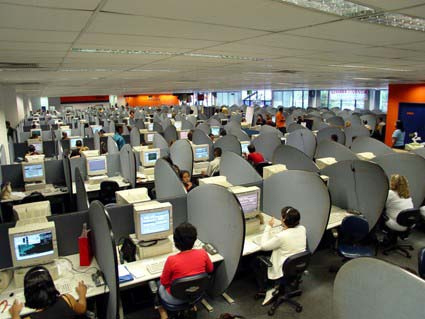| << Chapter < Page | Chapter >> Page > |
The World Bank defines high-income nations as having a gross national income of at least $12,746 per capita. The OECD (Organization for Economic and Cooperative Development) countries make up a group of thirty-four nations whose governments work together to promote economic growth and sustainability. According to the World Bank (2014b), in 2013, the average gross national income (GNI) per capita , or the mean income of the people in a nation, found by dividing total GNI by the total population, of a high-income nation belonging to the OECD was $43,903 per capita and the total population was over one billion (1.045 billion); on average, 81 percent of the population in these nations was urban. Some of these countries include the United States, Germany, Canada, and the United Kingdom (World Bank 2014b).
High-income countries face two major issues: capital flight and deindustrialization. Capital flight refers to the movement (flight) of capital from one nation to another, as when General Motors automotive company closed U.S. factories in Michigan and opened factories in Mexico. Deindustrialization , a related issue, occurs as a consequence of capital flight, as no new companies open to replace jobs lost to foreign nations. As expected, global companies move their industrial processes to the places where they can get the most production with the least cost, including the building of infrastructure, training of workers, shipping of goods, and, of course, paying employee wages. This means that as emerging economies create their own industrial zones, global companies see the opportunity for existing infrastructure and much lower costs. Those opportunities lead to businesses closing the factories that provide jobs to the middle class within core nations and moving their industrial production to peripheral and semi-peripheral nations.

Capital flight describes jobs and infrastructure moving from one nation to another. Look at the U.S. automobile industry. In the early twentieth century, the cars driven in the United States were made here, employing thousands of workers in Detroit and in the companies that produced everything that made building cars possible. However, once the fuel crisis of the 1970s hit and people in the United States increasingly looked to imported cars with better gas mileage, U.S. auto manufacturing began to decline. During the 2007–2009 recession, the U.S. government bailed out the three main auto companies, underscoring their vulnerability. At the same time, Japanese-owned Toyota and Honda and South Korean Kia maintained stable sales levels.
Capital flight also occurs when services (as opposed to manufacturing) are relocated. Chances are if you have called the tech support line for your cell phone or Internet provider, you’ve spoken to someone halfway across the globe. This professional might tell you her name is Susan or Joan, but her accent makes it clear that her real name might be Parvati or Indira. It might be the middle of the night in that country, yet these service providers pick up the line saying, “Good morning,” as though they are in the next town over. They know everything about your phone or your modem, often using a remote server to log in to your home computer to accomplish what is needed. These are the workers of the twenty-first century. They are not on factory floors or in traditional sweatshops; they are educated, speak at least two languages, and usually have significant technology skills. They are skilled workers, but they are paid a fraction of what similar workers are paid in the United States. For U.S. and multinational companies, the equation makes sense. India and other semi-peripheral countries have emerging infrastructures and education systems to fill their needs, without core nation costs.
As services are relocated, so are jobs. In the United States, unemployment is high. Many college-educated people are unable to find work, and those with only a high school diploma are in even worse shape. We have, as a country, outsourced ourselves out of jobs, and not just menial jobs, but white-collar work as well. But before we complain too bitterly, we must look at the culture of consumerism that we embrace. A flat screen television that might have cost $1,000 a few years ago is now $350. That cost savings has to come from somewhere. When consumers seek the lowest possible price, shop at big box stores for the biggest discount they can get, and generally ignore other factors in exchange for low cost, they are building the market for outsourcing. And as the demand is built, the market will ensure it is met, even at the expense of the people who wanted it in the first place.


Notification Switch
Would you like to follow the 'Introduction to sociology 2e' conversation and receive update notifications?